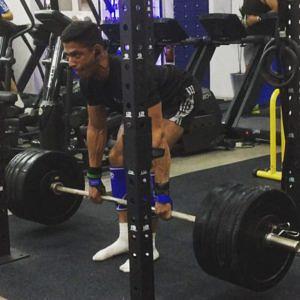- They end up demotivated due to feeling as though they’ve ‘failed’
- They accrue a tonne of body fat (mistaking it for muscle) in an attempt to force their bodyweight up
Why Do We Have These Unrealistic Expectations?
- Eating in a caloric surplus
- Hitting a minimum protein threshold (0.8-1g/lb for females and 1-1.25g/lb for males)
- Training progressively, consistently, and not missing training sessions
1 | 20-25lb (2lb/month)
2 | 10-12lb (1lb/month)
3 | 5-6lb (0.5lb/month)
4+ | 2-3lb
Beginner | 1-1.5% of total bodyweight/month
Intermediate | 0.5-1% of total bodyweight/month
Advanced | 0.25-0.5% of total bodyweight/month
How Do You Stay Motivated?


.jpg)
.png)
.jpg)